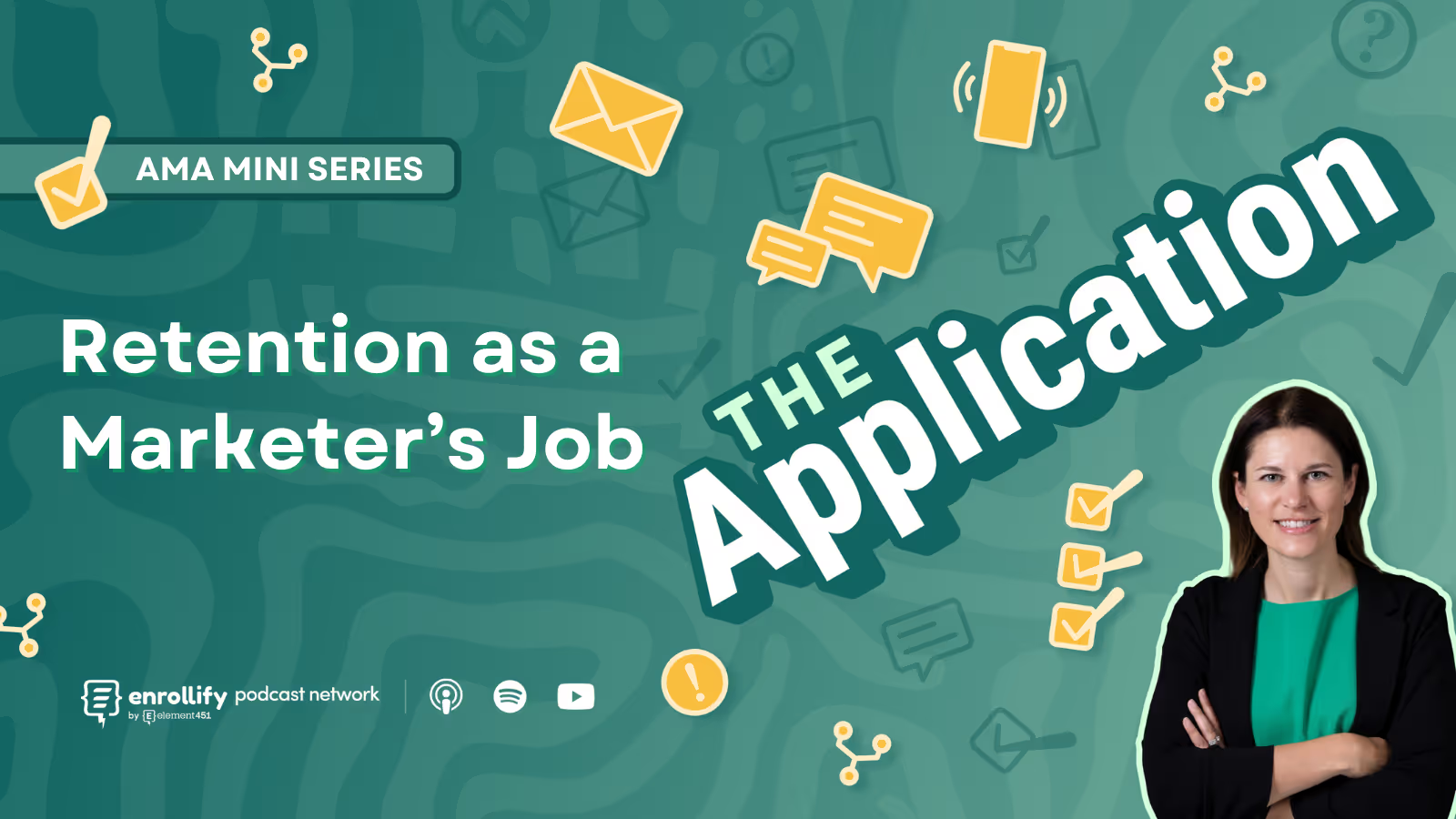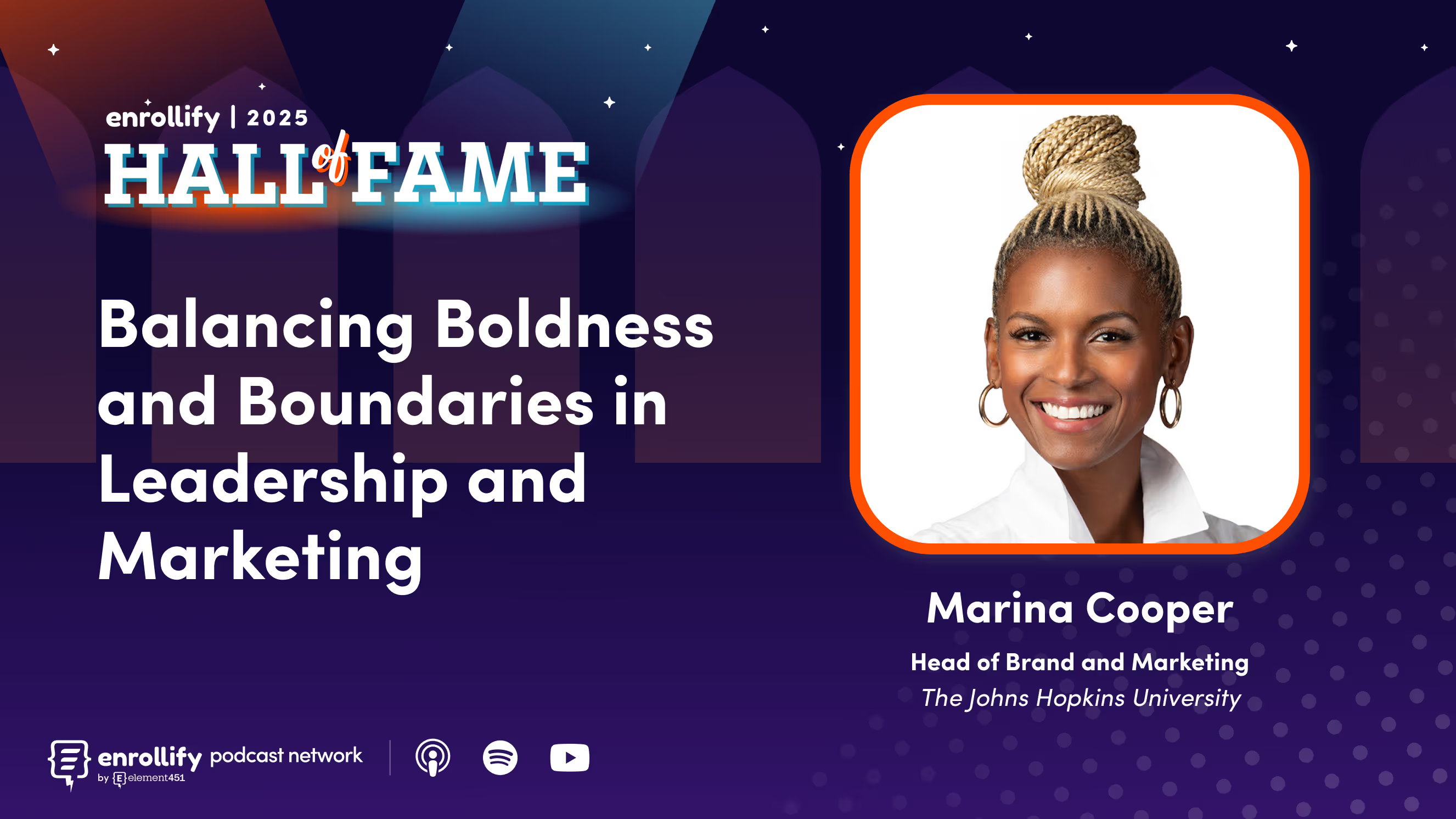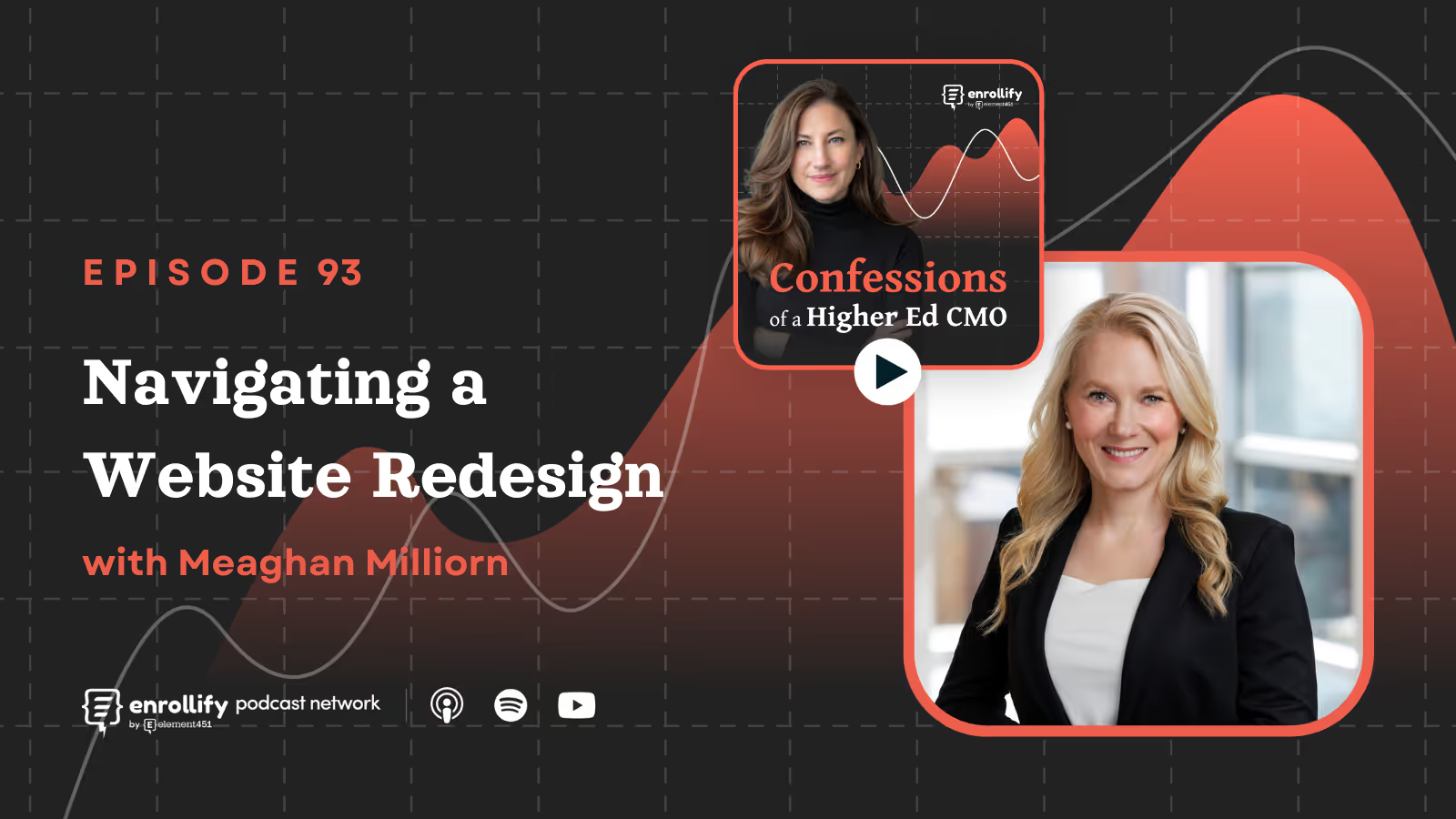About the Episode
According to Pew Research, only 62% of students who start a degree or certificate program finish their program within six years. The story—and potential—of stop-out students is more relevant than ever. This episode delves into the need for multi-pronged, intentional communication strategies that resonate with the unique challenges and aspirations of stop-out students.
It's not just about filling seats; it's about enriching the educational landscape with diverse perspectives and life experiences. Whether you're a seasoned higher ed marketer or an administrator looking to make a difference, this episode will leave you with a deeper understanding of why patience and intentionality are the keys to engaging with this student population and how their return can shape a more inclusive and vibrant academic community.
Key Takeaways
- Stopout students are a growing population: Over 40 million adults in the U.S. have some college credit but no degree, making them an important focus for enrollment strategies.
- The needs of stopout students are unique: Financial struggles, caregiving responsibilities, mental health issues, and life balance are common challenges for this audience.
- Re-engagement requires patience and persistence: It may take up to 50 touchpoints to re-enroll a stopout student, but the long-term benefits for the student and institution are significant.
- Plain language and ROI-focused messaging are key: Marketing to stopout students should emphasize flexibility, new program offerings, and available support services in a clear and direct manner.
- Diversity is a key consideration: Stopout populations disproportionately include first-generation college students, Black, and Latinx learners, making their re-engagement an important equity initiative.
- Institutional research is the first step: Understanding the size and characteristics of your stopout population is essential to crafting an effective strategy.
Episode Summary
Who Are Stopout Students?
Stopout students are individuals who leave college without completing their degrees. These students face a variety of challenges, including financial hardships, caregiving responsibilities, and mental health struggles. Dr. Rease Miles highlights that many stopouts are first-generation college students and students of color, making their re-engagement an essential equity and diversity issue.
Why Re-Engaging Stopouts Matters
Stopout students represent an incredible opportunity for colleges and universities. They are already part of the institutional community, and their return can help institutions meet enrollment and diversity goals. Dr. Rease Miles shares that only 2% of stopout students return to college on their own, underscoring the importance of intentional outreach and support from higher ed institutions.
Effective Strategies for Re-Engagement
- Understand the Audience: Use institutional research to identify stopout students, particularly those who have been away for more than three semesters.
- Tailor Marketing Messages: Focus on plain language, highlight program flexibility, and communicate ROI. Emphasize new offerings like online programs and support services such as telehealth and childcare.
- Adopt a Multi-Pronged Approach: Utilize a combination of phone calls, text messages, emails, and other tools to maintain consistent communication over time.
- Focus on Word of Mouth: Leverage existing adult learners and alumni to share their positive experiences with potential re-engagees.
- Involve Stopout Students in Feedback: Include stopout students in the process of reviewing marketing materials and web content to ensure messaging resonates.
Success Stories and Institutional Outcomes
Dr. Rease Miles shares the story of Adrienne, a stopout student who returned to complete her degree after 10 years. With the help of a success coach, Adrienne found clarity in her goals and achieved her degree, illustrating how persistence and personalized support can make a difference. Institutions that invest in stopout programs not only increase their enrollment but also contribute to the public good by helping individuals achieve life-changing milestones.
The Role of Marketers
Marketers are critical to the success of stopout programs. They must rethink their approach to this audience by focusing on the value and impact of returning to school. Campaigns should be data-driven, emotionally resonant, and patient, with an understanding that re-engaging stopouts is a long-term investment.
About The Enrollify Podcast Network
The Enrollify Podcast is a part of the Enrollify Podcast Network. If you like this podcast, chances are you’ll like other Enrollify shows too!
Our podcast network is growing by the month and we’ve got a plethora of marketing, admissions, and higher ed technology shows that are jam-packed with stories, ideas, and frameworks all designed to empower you to be a better higher ed professional.
Our shows feature a selection of the industry’s best as your hosts. Learn from Jaime Hunt, Allison Turcio, Dayana Kibilds, Dustin Ramsdell, Terry Flannery, Mallory Willsea, and many more.
Learn more about The Enrollify Podcast Network at podcasts.enrollify.org. Our shows help higher ed marketers and admissions professionals find their next big idea — come and find yours!















